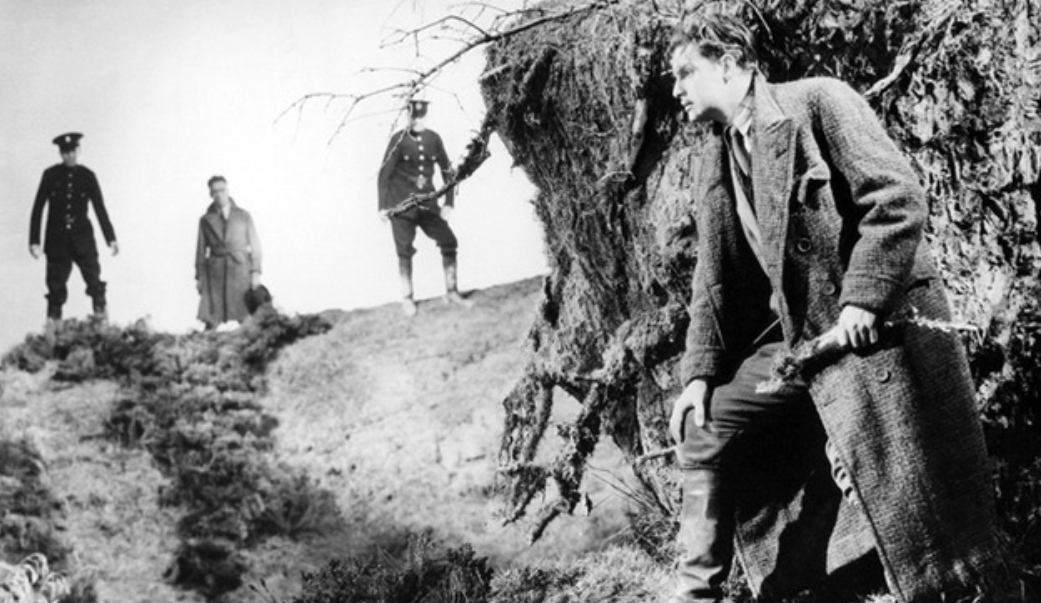Half a Good Story
Boodgery: First Contact in the Mid-Murray, 1820 to 1860
by John Lay
Not So Shabby Books, 2016, 132 pages, $25
_________________________________
Frontier conflict between Aborigines and incoming white grazing parties is one of the great and deservedly concerning issues of Australian history. This little book is a good contribution, as a study of frontier days in one district. It is important to look at first contact locally, as striving for a grand national narrative can be misleading.
However, for a portrait of an era, the book suffers from an excessive emphasis on shooting and that other fashionable tendency, loftiness about the past—they did not understand Aborigines as we do now. The title means “bad” in the local indigenous tongue and implies a bad period.
The river district around Swan Hill, the author’s home town, was first-class country for hunter-gatherers, with abundant fish and game and a fine climate, the country a combination of Mallee scrub, river flats and open plain. The Aborigines there were relatively numerous and notably healthy and vigorous. It is not far from Lake Mungo, site of the remains of habitation possibly 40,000 years ago.
Whites were first recorded visiting with Major Mitchell’s 1836 exploring visit, when he named the grassy plains “Australia Felix” and the squatters followed. Next, from 1838, came overlanders droving livestock to the new settlement at Adelaide. Squatters established stations on the mid-Murray in the 1840s, which was relatively late in the initial colonisation of what became Victoria and the Riverina.
Violent fatal conflict, in south-eastern Australia at least, was usually over either the Aborigines taking—stealing, in the debt-burdened squatters’ eyes—cattle and sheep or about whites not observing the ancient tribal rules for sleeping with women; they either did not give the male elders the dowry-like gifts expected or did not give the women back. History does not record to what extent ignorant or rough white men were responsible, or how often the Aboriginal women preferred a white man with a roof overhead, though it seems both circumstances were common and perhaps at times combined. Either situation could lead to the white man being fatally speared or waddied and a payback cycle beginning.
Most of the shepherds and other station workers were serving or former convicts, whose behaviour was usually on the rough side, but the socially superior young squatters, also young and lonely, left their mark too. The conflict over livestock had many causes, but it included payback from Aborigines against stations where they felt a grievance. They also may have got the idea from the many escaped or former convicts who roamed the frontier scrounging squatters’ animals.
These factors were all at work on the mid-Murray during the 1840s, with a substantial but unknown number of Aborigines and a few whites dead, but it was not at all on the scale of the terrible Rufus River affray in 1841 downstream from Mildura; there Aboriginal attacks on goods-laden overlanding drays led to a showdown which left an official count of thirty dead but the number of Aborigines killed may have been much higher.
The climax on the mid-Murray came in 1846 with Aborigines killing a squatter’s son for unknown reasons that may have included a woman. The ensuing fighting brought a visit from the Native Police, and the deaths of several more Aborigines. The Native Police comprised Aborigines from the Melbourne region, led by white officers. They established a fine reputation when policing their own Kulin people but their justice could be rough and murderous against “foreign” Aborigines. They paid bloody disciplinary visits to the south-west of Victoria and Gippsland in the later 1840s as well as the mid-Murray, but the outcome for better or worse was to bring peace, and frontier violence there faded out, as what little of it there was in most districts further south had faded earlier.
There is nothing in this book to support the “invasion/resistance” model of the frontier. It is more, as so often, a messy story of blacks partly but warily accepting whites, but fatal collisions when the cultures clashed or change was too fast.
Lay says the much criticised subsequent “silence” about frontier violence was partly due to shame and reluctance to bring up a painful past but also because the recorded information was fragmentary and many of those involved moved on from the district; the gold rush changed everything.
Lay would have enlivened his story with more on the cultural clash—his Aborigines tend to be cardboard cut-out victims—and more on the main law-and-order problem. There was a lack of adequate policing on a vast, lightly populated grazing frontier which extended in a few years over an immense region stretching from Brisbane to Adelaide and beyond. The old tribal Aborigines there knew no alternative to payback, violence or death to enforce discipline. The beginnings of modern policing did not arrive until the 1850s. Lay also has little on the grazing itself, the reason the whites came.
The strangest and most regrettable but also instructive feature of the book is the treatment of the smallpox epidemic of the 1820s, when so many indigenous people in the region died that they could not be buried and their bodies were left lying around the camps. Lay has gathered substantial evidence on this, which is within his period, though not on the comparable epidemic in the 1780s. A common though contested view—necessarily based in inadequate evidence—is that about half the indigenous people of Australia died in each smallpox visitation, making it far, far more calamitous than the modest number of deaths pastoral pioneers inflicted, and the worst disaster in known Australian history.
Lay says “there has been some conjecture that it was introduced into Australia by Macassan fishermen” but there is “strong cause to believe that Sydney was the source of the virus”. This is the opposite of the more common assessment that it indeed did come from Indonesian fishermen visiting the northern coast. The source has been much contested but the strongest book, with support from the World Smallpox Eradication Campaign, is Judy Campbell’s Invisible Invaders: Smallpox and Other Diseases in Aboriginal Australia, 1780–1880 (2002).
Lay does not include Campbell’s book in his bibliography, which is comprehensive but weighted to the black-armband side. Black-armband writers usually ignore or play down smallpox and the disease story generally, preoccupied as they are with guns and white colonial guilt.
Robert Murray is the author of The Making of Australia : A Concise History (Rosenberg).
Madam: Archbishop Fisher (July-August 2024) does not resist the attacks on his church by the political, social or scientific atheists and those who insist on not being told what to do.
Aug 29 2024
6 mins
To claim Aborigines have the world's oldest continuous culture is to misunderstand the meaning of culture, which continuously changes over time and location. For a culture not to change over time would be a reproach and certainly not a cause for celebration, for it would indicate that there had been no capacity to adapt. Clearly this has not been the case
Aug 20 2024
23 mins
A friend and longtime supporter of Quadrant, Clive James sent us a poem in 2010, which we published in our December issue. Like the Taronga Park Aquarium he recalls in its 'mocked-up sandstone cave' it's not to be forgotten
Aug 16 2024
2 mins







